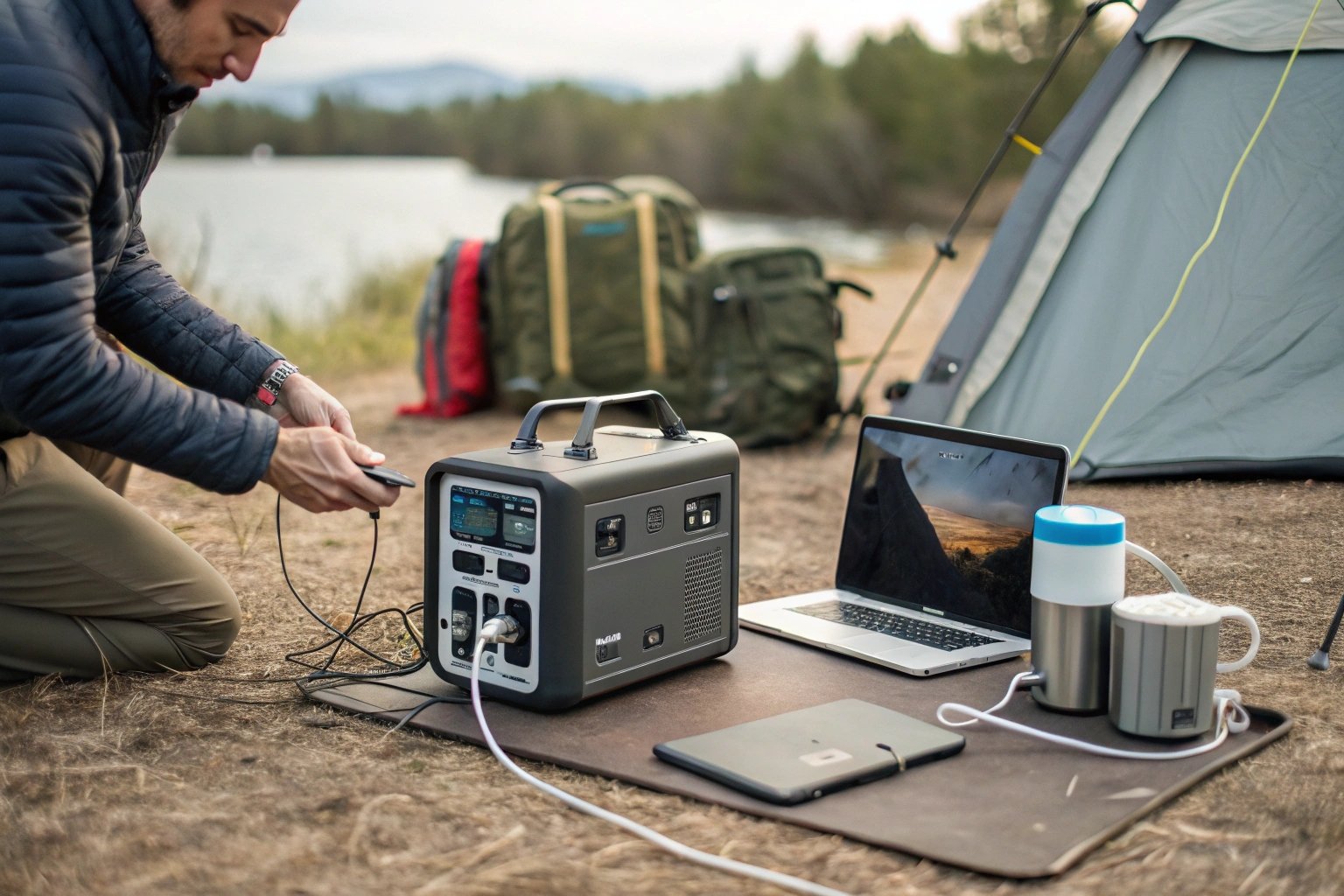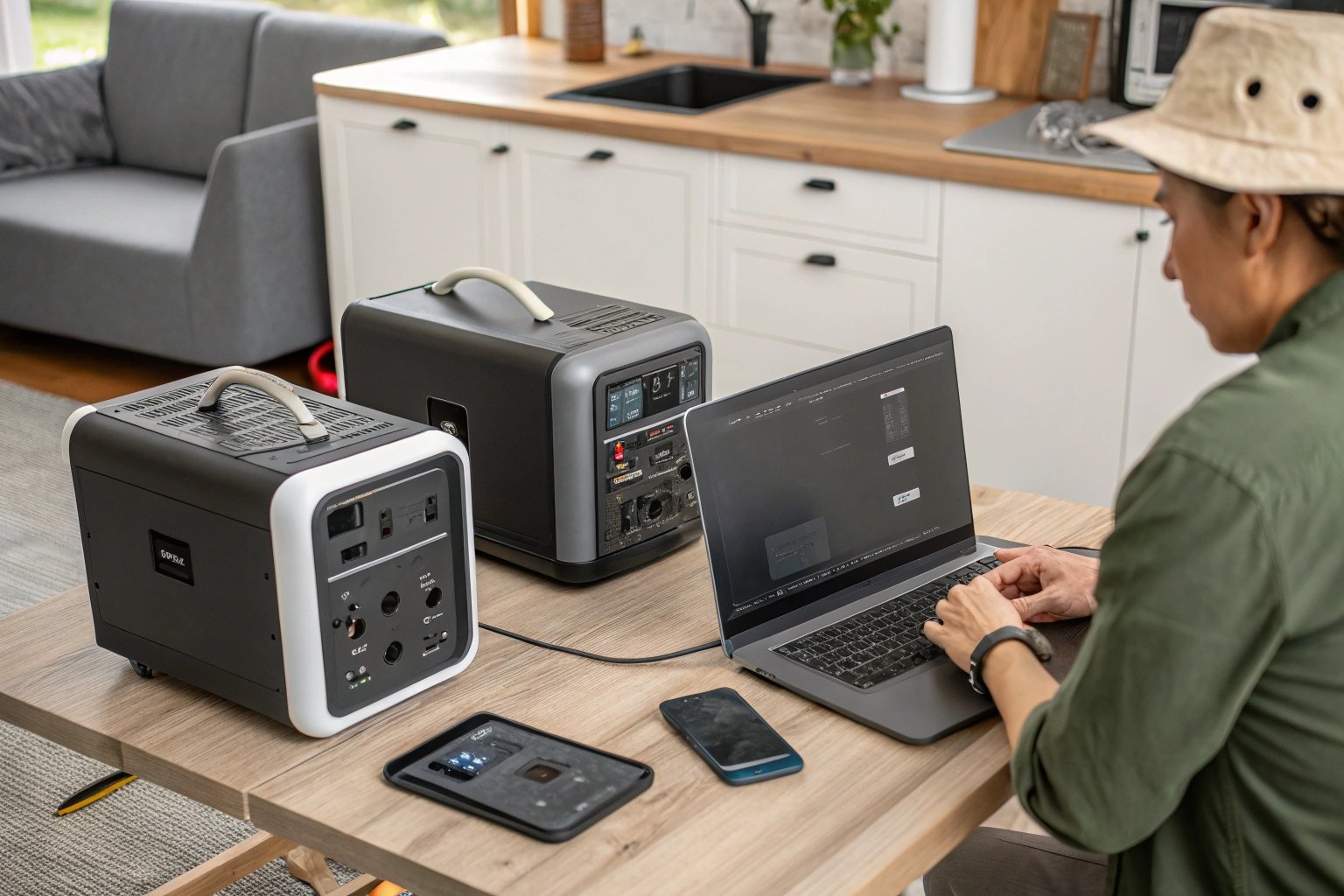Portable power stations are becoming a must-have for outdoor enthusiasts, emergency preparedness, and those who live off the grid. Whether you're camping, tailgating, or need backup power during an outage, understanding how these devices work, what features to look for, and how to choose the right one can help you make an informed decision.
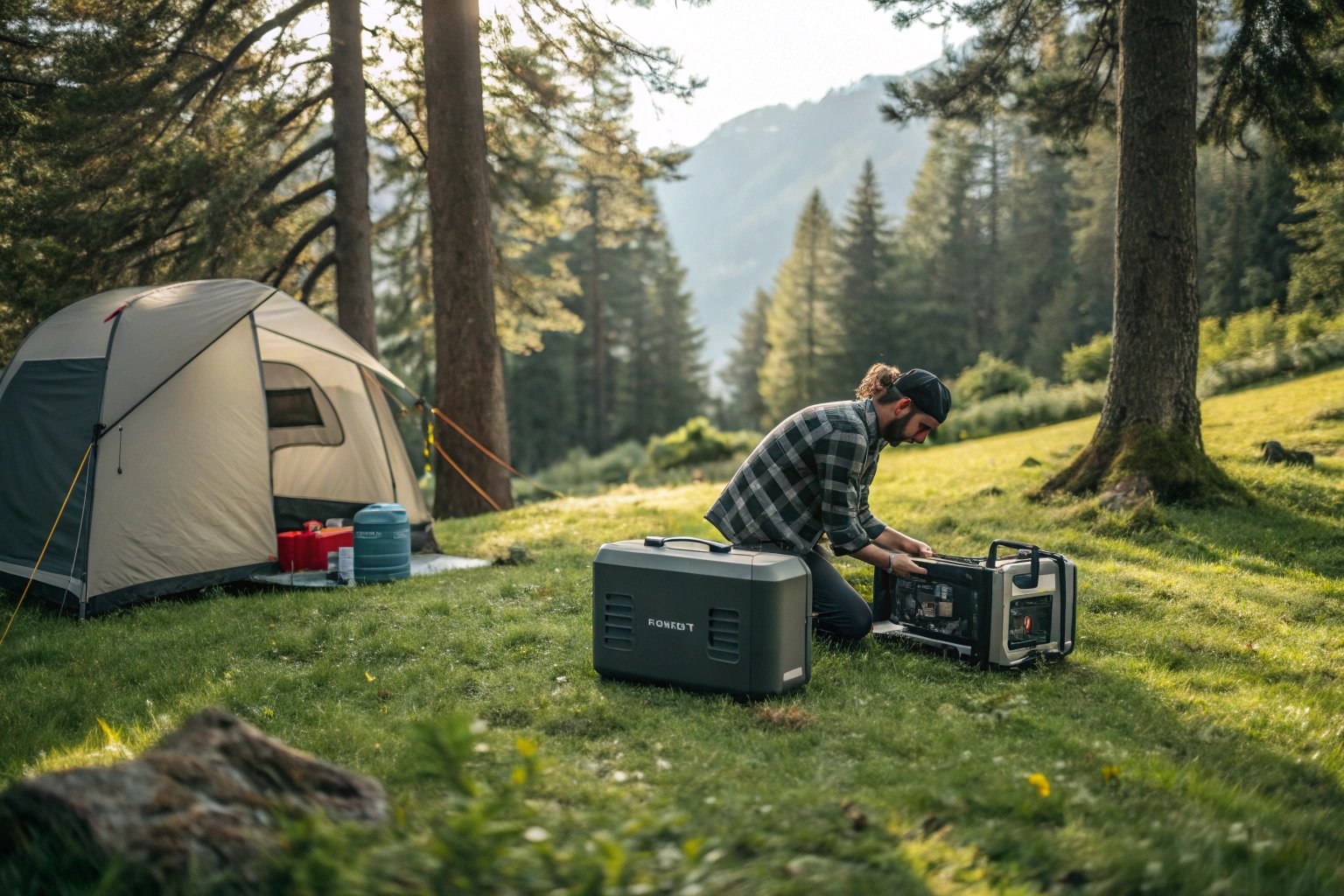
In this guide, we’ll cover everything you need to know about portable power stations, from their basic functionality to the features you should consider when buying one.
What is a Portable Power Station?
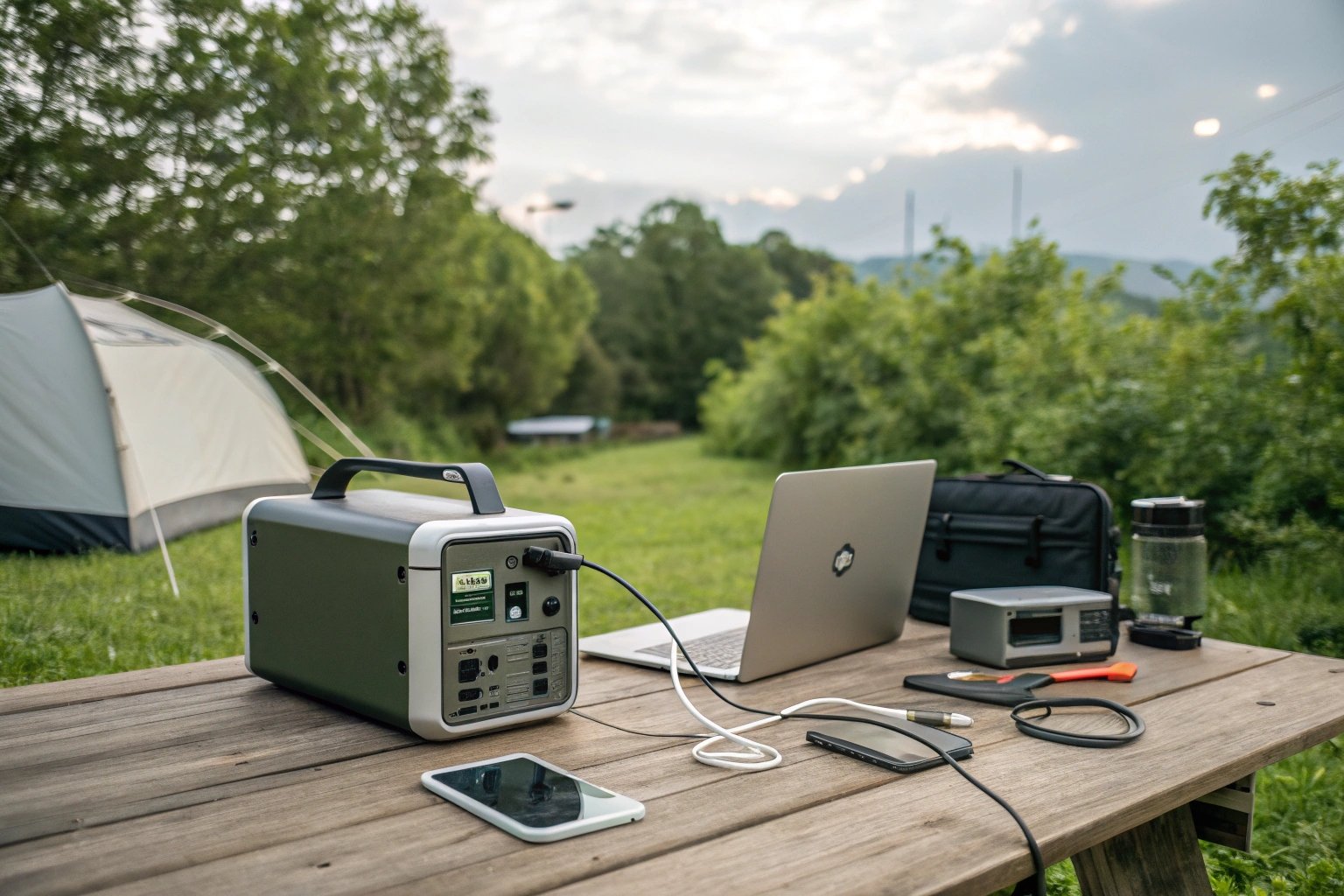
A portable power station is a compact, battery-powered device that stores electricity and can provide power to various devices when you're away from the grid. They usually come with multiple output options such as AC outlets, USB ports, and DC outputs, making them versatile enough to charge phones, laptops, small appliances, and more.
Unlike traditional gas-powered generators, portable power stations use rechargeable batteries and are completely silent, making them a great eco-friendly and quiet alternative.
How Do Portable Power Stations Work?
Portable power stations store electrical energy in batteries, which can be charged from an AC outlet, car charger, or solar panels. Once charged, the stored energy can be used to power your devices through various output ports.
The energy stored in the battery is in the form of direct current (DC), but most household appliances require alternating current (AC), so an inverter inside the power station converts the DC power into AC. This makes it suitable for running a variety of devices like smartphones, laptops, small appliances, and even some power tools.
Key Features to Look for in a Portable Power Station
Battery Capacity (Watt-Hours)
The battery capacity, measured in watt-hours (Wh), is one of the most important factors to consider. The higher the watt-hour, the longer the power station will last. For example, a 500Wh power station can power devices that consume 100 watts for about 5 hours.

When choosing a power station, consider the devices you’ll be using and their total power consumption to ensure the battery has enough capacity to meet your needs.
Output Ports and Power Compatibility
Look for a power station that offers a variety of output ports, including USB-A, USB-C, AC outlets, and DC carports. Different devices require different types of outputs, so make sure the power station you choose can support all of the devices you need to charge or power. Some models even offer multiple AC outlets, allowing you to charge several devices at once.
Input Options and Charging Speed
The time it takes to recharge a portable power station depends on the input options. Most models can be charged via an AC outlet, car charger, or solar panel. AC charging is typically the fastest, but solar charging can be a great off-grid option for longer trips.
Check the input wattage of the power station to determine how fast it recharges. Some models support dual charging, allowing you to recharge via AC and solar panels simultaneously, speeding up the process.
Portability and Weight
Portability is a critical factor, especially if you plan to use your power station for outdoor activities like camping or tailgating. Small models are lightweight and easy to carry, often weighing between 5 to 10 pounds. However, larger units with higher capacities can weigh up to 30 pounds or more. Consider the balance between power and weight—while larger models offer more power, they may be harder to transport.
Battery Type and Lifespan
Portable power stations typically use lithium-ion batteries, but some higher-end models use lithium iron phosphate (LiFePO4) batteries, which offer a longer lifespan and better safety features. LiFePO4 batteries can last for 2000-3000 cycles, compared to the 500-1000 cycles of regular lithium-ion batteries.
When buying, consider how often you’ll use the power station and how long you expect it to last. LiFePO4 batteries tend to be more expensive, but they offer long-term reliability, especially for frequent users.
Safety Features
Safety is important when dealing with electrical devices. Look for a portable power station with built-in safety features like short-circuit protection, overcharge protection, temperature regulation, and surge protection. These features help prevent damage to your devices and ensure that the power station itself remains safe to use.
Warranty and Customer Support
Many portable power stations come with warranties ranging from 1-3 years. A warranty can give you peace of mind, ensuring you’re covered if any defects or performance issues arise. Be sure to check the terms of the warranty and the manufacturer's customer support options for troubleshooting and repairs.
Types of Portable Power Stations
Small Power Stations (100-300 Wh)
These are compact and lightweight, ideal for charging small devices like smartphones, tablets, and cameras. They are great for short trips or emergencies but are not designed to power larger devices for extended periods.
Mid-Range Power Stations (500-1000 Wh)
These offer a good balance of portability and power. They are suitable for powering laptops, mini-fridges, and lights. Mid-range units are great for weekend camping trips, RVs, or as a backup power source for smaller appliances during a power outage.
Large Power Stations (1500+ Wh)
These are best for heavy-duty use and can power large appliances like refrigerators, power tools, and even small home systems. These models are heavier and bulkier, but they provide the extended power you need for longer durations or larger devices.
Pros and Cons of Portable Power Stations
Pros:
- Silent operation: No noisy engines or fuel.
- Eco-friendly: Can be charged via solar power.
- Portable: Lightweight and easy to carry.
-
Low maintenance: No need for fuel or regular engine maintenance.
Cons:
- Limited power: Cannot run high-wattage devices for long periods.
- Recharge time: Recharging can take several hours, especially with solar panels.
- Higher cost: The initial investment can be higher compared to traditional generators.
How to Use a Portable Power Station?
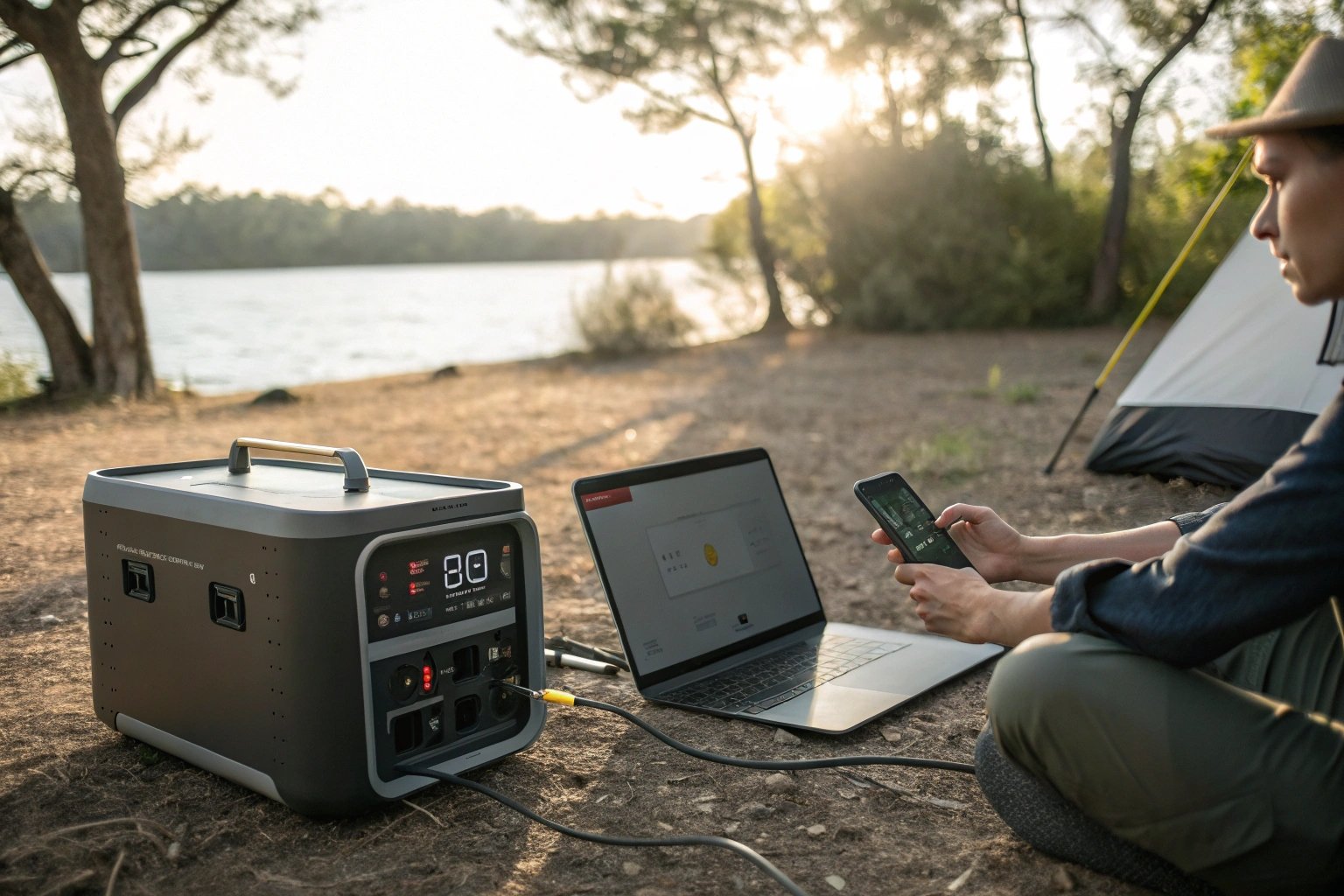
Using a portable power station is simple. After charging it fully, connect your devices to the appropriate output ports. Most models provide clear indicators showing the battery level and power consumption, so you can monitor usage. If the battery gets low, you can recharge it using an AC outlet, car charger, or solar panels.
Conclusion
A portable power station is a versatile and eco-friendly solution for providing power on the go. By considering factors like battery capacity, output options, charging speed, and portability, you can select the right model to meet your needs. Whether for camping, emergency preparedness, or outdoor activities, a portable power station can provide reliable, clean power when you need it most.

